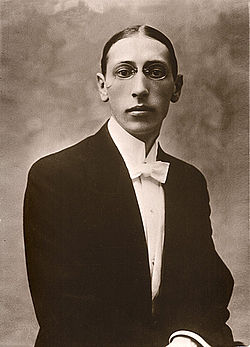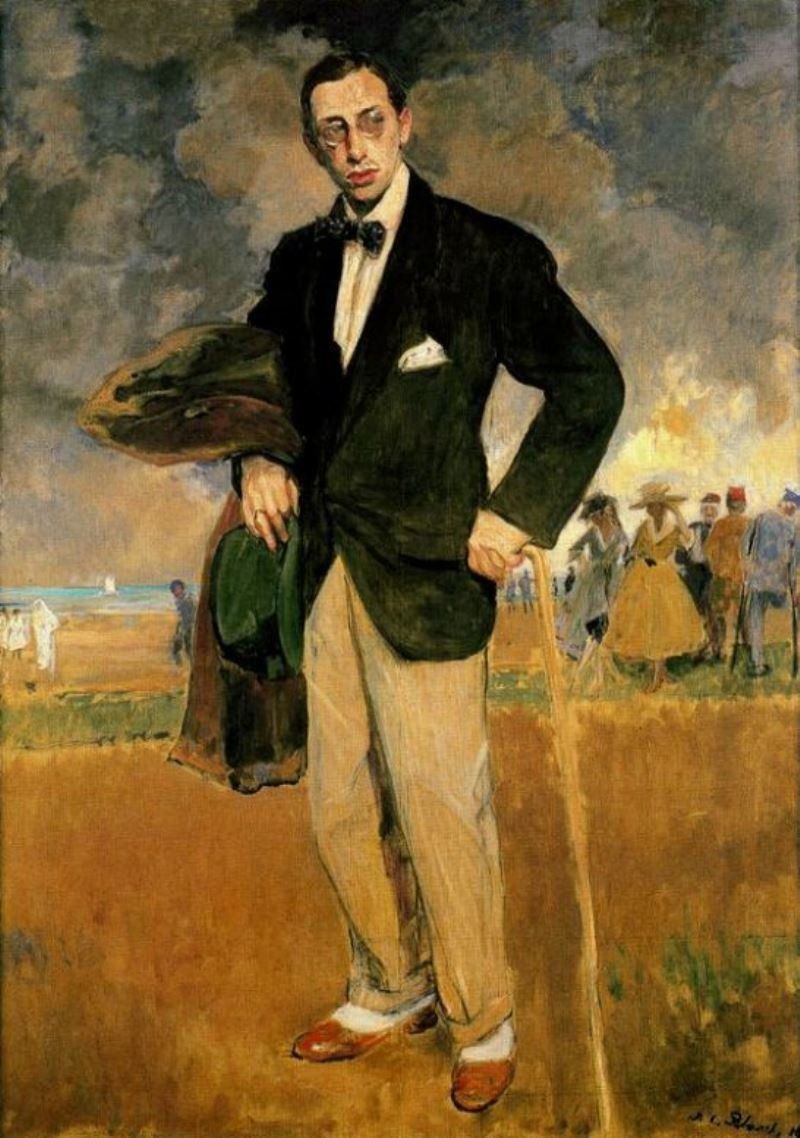

Queer Places:
Saint Petersburg State University, University Embankment, 7/9, Sankt-Peterburg, Russia, 199034
Grand Hotel, now Leysin American Schools SA, Chem. de la Source 3, 1854 Leysin, Svizzera
JW Marriott Essex House New York, 160 Central Park S, New York, NY 10019
Isola di San Michele, 30135 Venezia VE, Italia
 Igor Fyodorovich Stravinsky (17 June [O.S.
5 June] 1882 – 6 April 1971) was a Russian-born composer, pianist, and
conductor. He is widely considered one of the most important and influential
composers of the 20th century. In “Discoveries,” Robert Craft, the Igor
Stravinsky’s longtime friend and assistant, writes, “Maurice
Ravel and Stravinsky were, of all artists, the most successful in
concealing their sexuality. The two were time-to-time lovers....” He further
states that Stravinsky had affairs with composer Nikolai Rimsky-Korsakov’s
eldest son, Andrey
Rimsky-Korsakov, and with the Belgian composer
Maurice Delage. “In Stravinsky’s
own words,” Craft writes, “he was in love with Andrey, a University of St.
Petersburg classmate and music critic.”
Igor Fyodorovich Stravinsky (17 June [O.S.
5 June] 1882 – 6 April 1971) was a Russian-born composer, pianist, and
conductor. He is widely considered one of the most important and influential
composers of the 20th century. In “Discoveries,” Robert Craft, the Igor
Stravinsky’s longtime friend and assistant, writes, “Maurice
Ravel and Stravinsky were, of all artists, the most successful in
concealing their sexuality. The two were time-to-time lovers....” He further
states that Stravinsky had affairs with composer Nikolai Rimsky-Korsakov’s
eldest son, Andrey
Rimsky-Korsakov, and with the Belgian composer
Maurice Delage. “In Stravinsky’s
own words,” Craft writes, “he was in love with Andrey, a University of St.
Petersburg classmate and music critic.”
Stravinsky's compositional career was notable for its stylistic diversity. He first achieved international fame with three ballets commissioned by the impresario Serge Diaghilev and first performed in Paris by Diaghilev's Ballets Russes: The Firebird (1910), Petrushka (1911), and The Rite of Spring (1913). The last of these transformed the way in which subsequent composers thought about rhythmic structure and was largely responsible for Stravinsky's enduring reputation as a musical revolutionary who pushed the boundaries of musical design.
Igor Stravinsky was a frequent visitor to the Grand Hotel in Leysin where his wife was a patient, and he compose there the "Rite of Spring". In March 1914, Jean Cocteau joined Stravinsky at the Grand Hotel, accompanied by his then lover, Paul Thévenaz, whom Cocteau introduced as an "unpolished, simple, fresh intelligence."
Stravinsky's "Russian phase" which continued with works such as Renard, the Soldier's Tale and Les Noces, was followed in the 1920s by a period in which he turned to neoclassical music. The works from this period tended to make use of traditional musical forms (concerto grosso, fugue and symphony), drawing on earlier styles, especially from the 18th century. In the 1950s, Stravinsky adopted serial procedures. His compositions of this period shared traits with examples of his earlier output: rhythmic energy, the construction of extended melodic ideas out of a few two- or three-note cells and clarity of form, and of instrumentation.
In 1969, Stravinsky moved to the Essex House in New York, where he lived until his death in 1971 at age 88 of heart failure.[75] He was buried at San Michele, close to the tomb of Sergei Diaghilev.[76]

Igor Strawinsky, by Paul Thévenaz
Igor Strawinsky, by Baroness Catherine D'Erlanger, Painted circa 1929

by George
Platt Lynes

Portrait of Igor Stravinsky by Jacques-Émile Blanche, 1915
My published books:
https://www.latimes.com/entertainment/arts/la-xpm-2013-jul-18-la-et-cm-stravinksy-craft-20130721-story.html